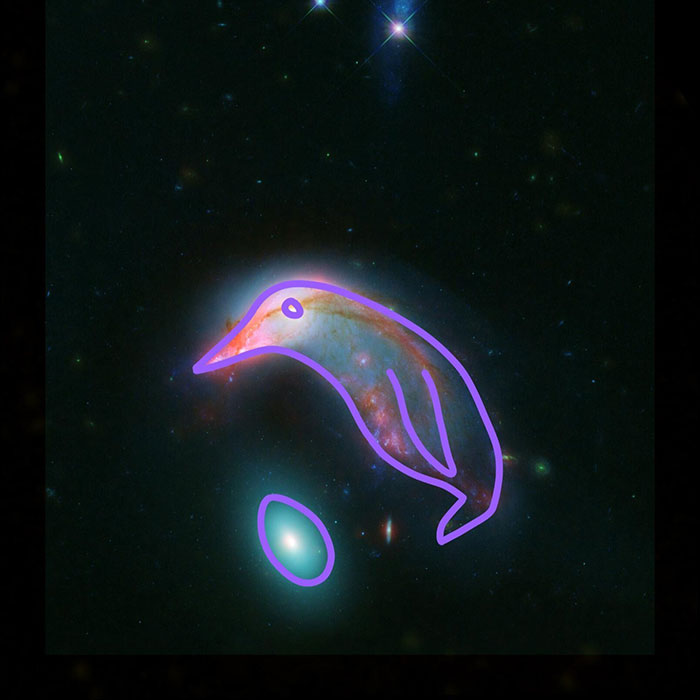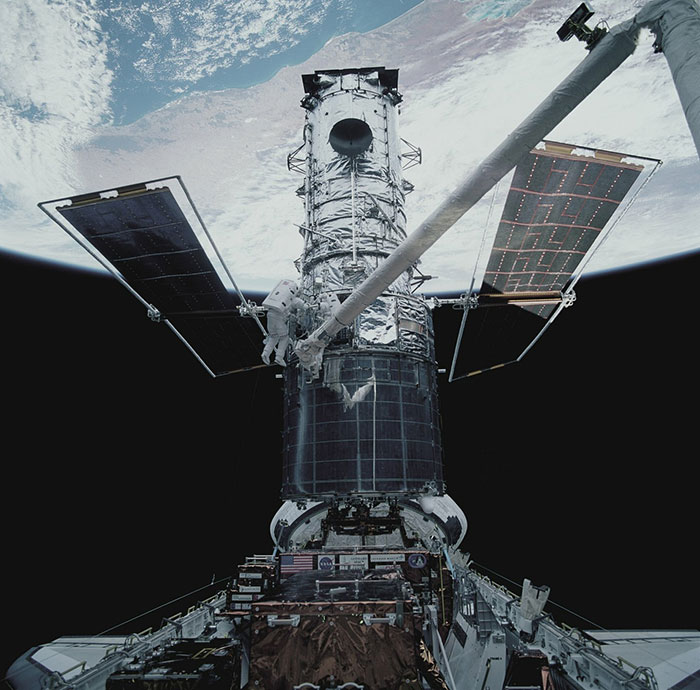There’s a cosmic “noot,” the US National Aeronautics and Space Administration (NASA) has just declared, and it’s both beautiful and adorable. Taking to its official Instagram page, NASA has released two images displaying galaxies that are shaped like a penguin and an egg.
Captured by NASA’s Hubble space telescope and Spitzer space telescope, the pairing, known collectively as Arp 142, was found 23 million light-years away, about 10 times farther from us than the Andromeda galaxy.
The Andromeda galaxy is a notable barred spiral galaxy and is the nearest major galaxy to the Milky Way (our galaxy).
The “penguin” part of the pair, officially recognized as NGC 2936, is a spiral galaxy, twisted and pulled by the pull of its neighbor
A penguin and egg-shaped pairing of galaxies, known collectively as Arp 142, was found 23 million light-years away
Image credits: NASA
The “penguin” part of the pair, officially recognized as NGC 2936, is a spiral galaxy, twisted and pulled by the pull of its neighbor, NASA described.
Due to its mix of features – new stars, strands of gas, and others – its distortion is readily visible, NASA added. The “penguin” galaxy appears to be standing over its galactic neighbor.
NASA has described twisted filaments of blue and red outlining the penguin shape in the speckled, white glow of the galaxy’s body. Wisps of rusty lines cascade from the penguin’s “beak” to its “torso.“
The result makes for two galaxies standing out against a black background dotted with small, faint stars and two brighter stars at the top of the image
Image credits: NASA
According to the space agency, the “egg,” officially NGC 2937, in contrast, appears featureless due to its smooth distribution of old stars. This hides any shaping caused by its neighbor.
The result makes for two galaxies standing out against a black background dotted with small, faint stars and two brighter stars at the top of the image. The “egg” galaxy is just below the “penguin,” appearing as a glowing, turquoise oblong.
The galaxies were captured by NASA’s Hubble space telescope and Spitzer space telescope
Image credits: nasahubble
NASA has suggested that over time, gravity will bring the two galaxies closer together until they merge into one. This type of merging likely occurred in the history of most large galaxies we see today, including the Milky Way.
As the image of Arp 142 was first captured by NASA’s Spitzer and Hubble space telescopes in 2018, the space agency is anticipating its newer James Webb Space Telescope to see all of these wavelengths of light, with dramatically better clarity.
Some readers joked that it didn’t answer the old question of “Which came first, the penguin or the egg?”

Dr. Thomas Hughes is a UK-based scientist and science communicator who makes complex topics accessible to readers. His articles explore breakthroughs in various scientific disciplines, from space exploration to cutting-edge research.




















